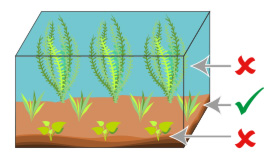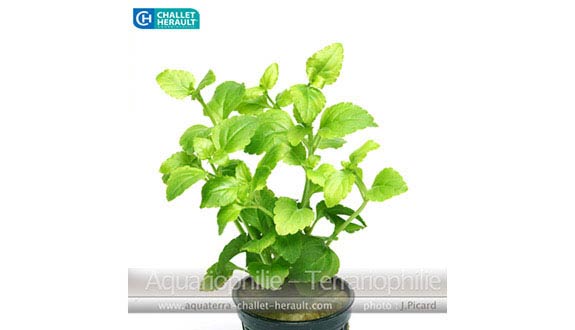

Alternative species (click on the thumbnail to see the card)
Names
Scientific name
Cardamine lyrata
Nastourtium japonicum
Common name
Japanese cress
Chinese ivy
Japanisches schaumkraut (DE)
Origin

Origin: Asia (China, Japan, Korea, Siberia)
Ideal fertilization

CO2: 10-40mg/l
Nitrates (NO3): 10-50mg/l
Phosphates (PO4): 0,1-3mg/l
Potassium (K): 5-30mg/l
iron (Fe): 0,01-0,5mg/l
Group

Brassicaceae
Kind

Bulb
Parameters

T°: 15 to 22°C or 59 to 72°F
pH: 6 to 6.5
Hardness: 6 to 20°dGH
Difficulty

Average
Lighting

Strong
Size

20 to 4 cm (8 to 16")
Plantation

Middle
Growth

Fast
Presentation
Who is the Japanese cress?
Presentation
Who is the Japanese cress?
In its natural environment, this plant is found rather in marshes. In fact, it is an amphibious plant that can live both underwater and out of water in wetlands.
It can live in outdoor pools during the summer.
It is a creeping species with thin stems and pretty little green leaves.
Planting and maintenance
How to plant and maintain the Japanese cress?
Planting and maintenance
How to plant and maintain the Japanese cress?
For a nice rendering, plant a group with a density of about 3 feet for a 20 cm (8") square. The ideal location is in the middle and on the sides of the planter.
It is quite demanding and its good maintenance in an aquarium requires conditions that are not always compatible with other species used in aquarium keeping. For example, the temperature must remain quite low and the water must be quite soft. However, this corresponds well to species such as aloe, sagittarius or vallisnery. Bright lighting is also essential.
The aquarium floor must be sufficiently rich, and the addition of fertilizer would be a plus. The diffusion of CO2 can also help the aquarium to flourish, although this is not an absolute requirement.
If the conditions are favourable, it grows relatively fast (up to 20 cm or 8" per month). Prune it regularly, especially so that the light reaches the foot of the plant. Moreover, it will take on a nice bush effect if you do not let it grow too high, but rather if you encourage its crawling side.
If the leaves become small, the water temperature is too high. This makes the plant very fragile and it stops growing.
Farming
How to farm the Japanese cress?
Farming
How to farm the Japanese cress?
This plant is very easy to grow. Just cut off the top part of the stem by at least 15 cm (6") and replant it a little further.
Good To know
Find all additional information!
Good To know
Find all additional information!
Be careful, some medicines used in aquarium to treat fish can be harmful to this plant. If a treatment is necessary, it is better to remove it while the remedy is being administered.
It is a plant that has been used in aquariums for more than 100 years!
Yours photos!
Comments
Sort by:
Please login to post comments

